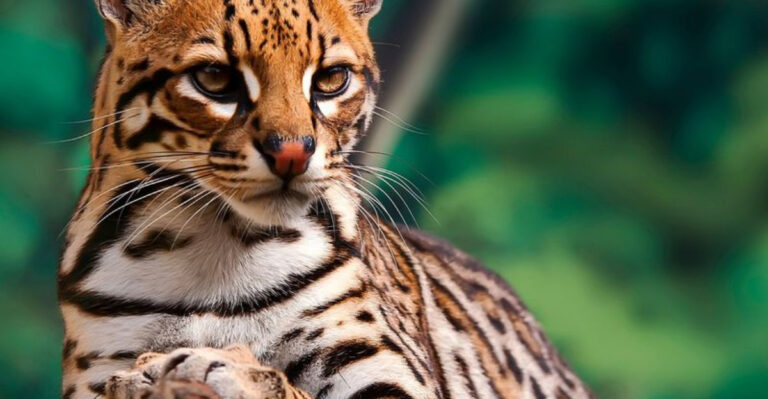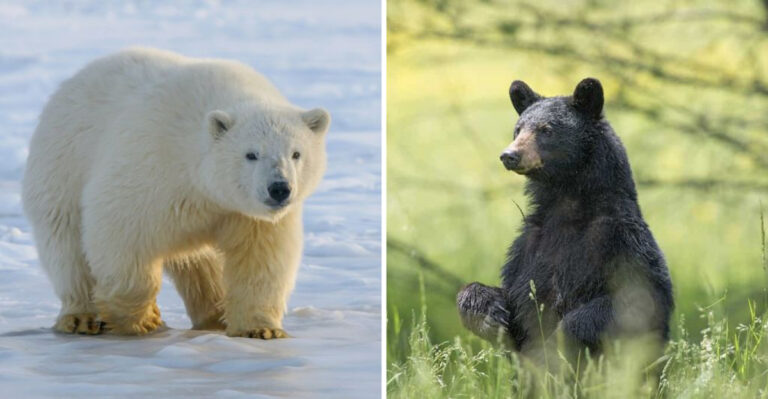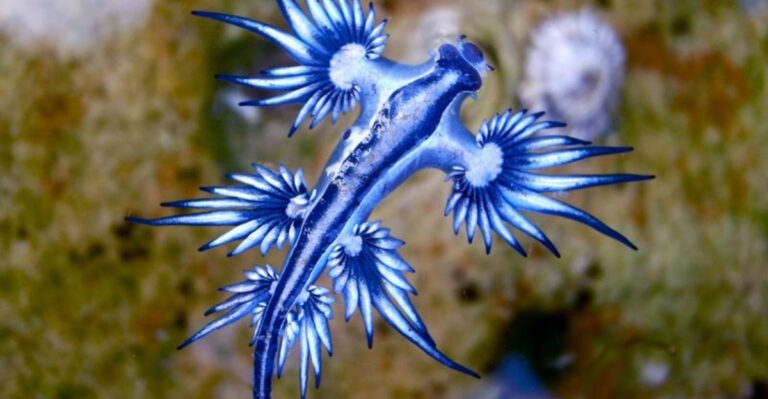10 Oceanic Wildlife You Should Know About
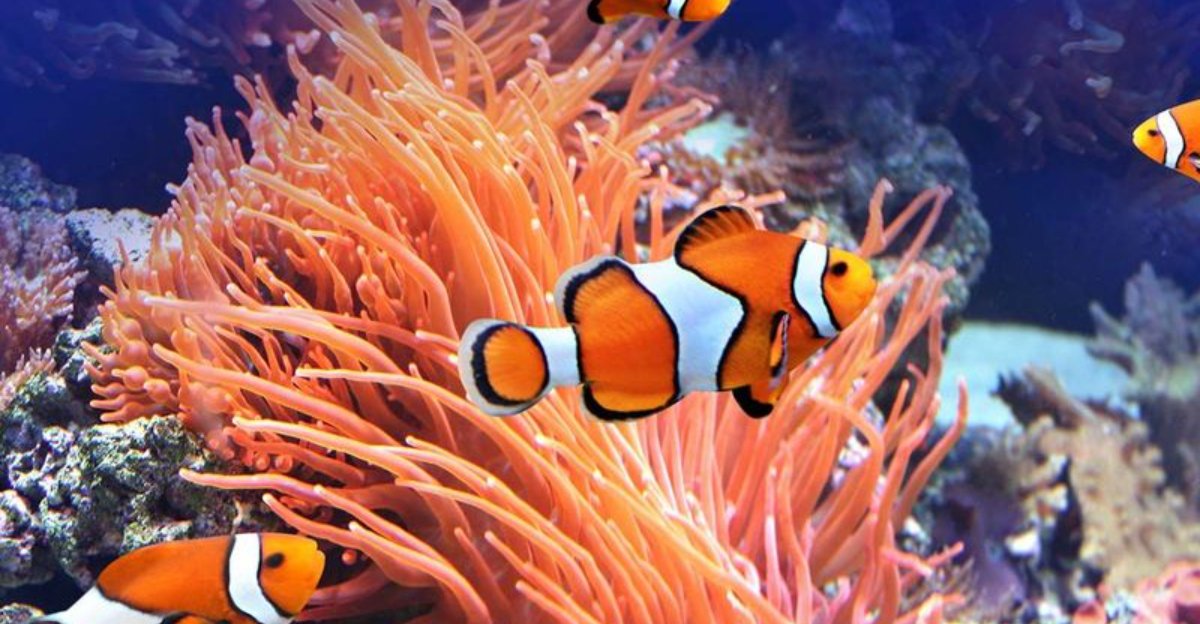
The ocean is a vast, mysterious place teeming with some of the most intriguing creatures on Earth.
From the graceful dance of the jellyfish to the formidable presence of the great white shark, the diversity of oceanic wildlife is as fascinating as it is vast.
Today, we’ll explore some of the most unique and captivating species that inhabit the world’s oceans, offering insight into their behaviors, habitats, and more.
1. Great White Shark
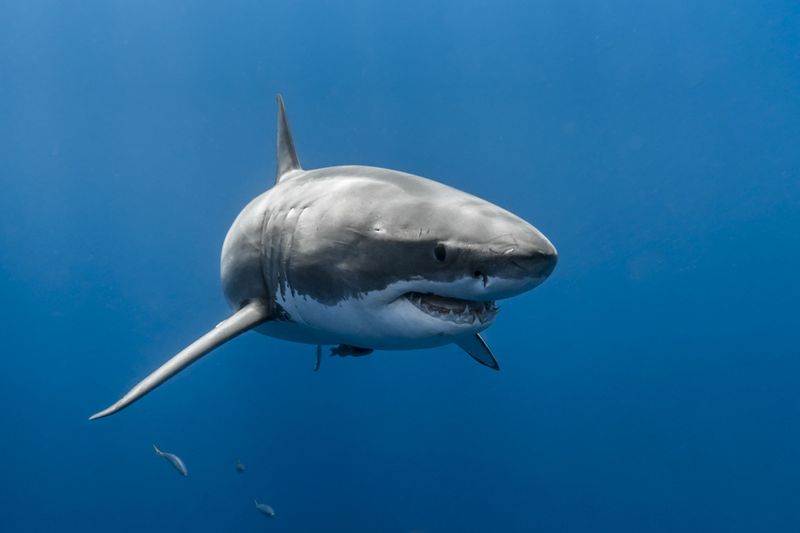
The great white shark, Carcharodon carcharias, is perhaps the most well-known marine predator. Recognizable by its stark white underbelly and serrated teeth, this apex predator commands respect in the oceanic world.
Found in coastal surface waters of all major oceans, great whites can reach lengths of up to 20 feet and weigh over 2,000 pounds. Their speed and agility in the water, coupled with a keen sense of smell and acute hearing, make them efficient hunters.
Despite their fierce reputation, great white sharks are an essential part of the marine ecosystem. They help maintain balance by controlling the population of seals and sea lions, their primary prey. Their presence is a sign of healthy oceans.
However, they face threats from human activities like overfishing and habitat destruction. Conservation efforts are crucial to ensure their survival.
For those fascinated by marine life, observing great whites from the safety of a cage dive offers a thrilling encounter. These majestic creatures remind us of the delicate balance within our oceans, and the importance of preserving such magnificent species for future generations.
2. Blue Whale
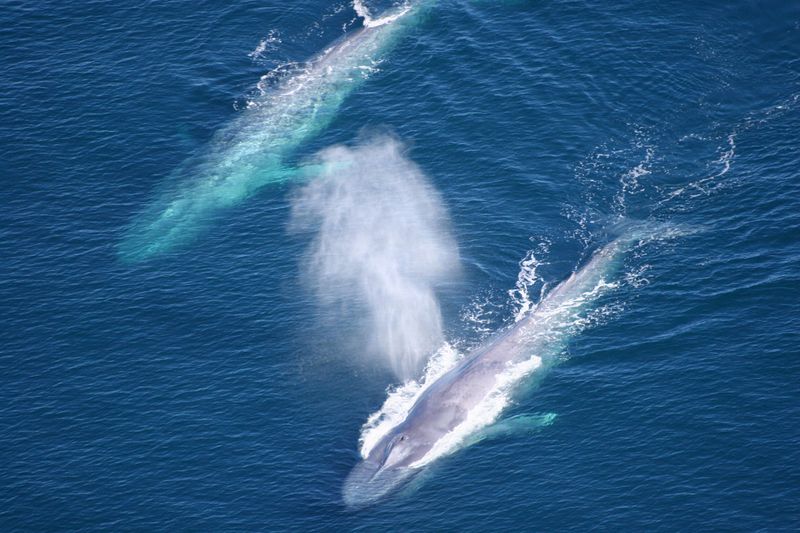
The blue whale, Balaenoptera musculus, holds the title of the largest animal ever known to exist. This gentle giant can grow up to 100 feet long and weigh as much as 200 tons.
Despite their immense size, blue whales primarily feast on tiny krill, consuming up to four tons a day during feeding season. Their deep blue-grey color and mottled skin pattern make them unmistakable in the ocean.
Blue whales are found in all the world’s oceans, except the Arctic, though they prefer deeper waters. They are known for their powerful, low-frequency calls, which can be heard over vast distances underwater. These calls are crucial for communication and navigation across the ocean’s expansive reaches.
Human activities such as ship strikes and climate change pose significant threats to their populations. Conservation efforts focus on protecting their natural habitats and reducing ship speeds in known whale territories.
Observing a blue whale in its natural habitat is a humbling experience, reminding us of the vastness and wonder of the natural world.
3. Jellyfish
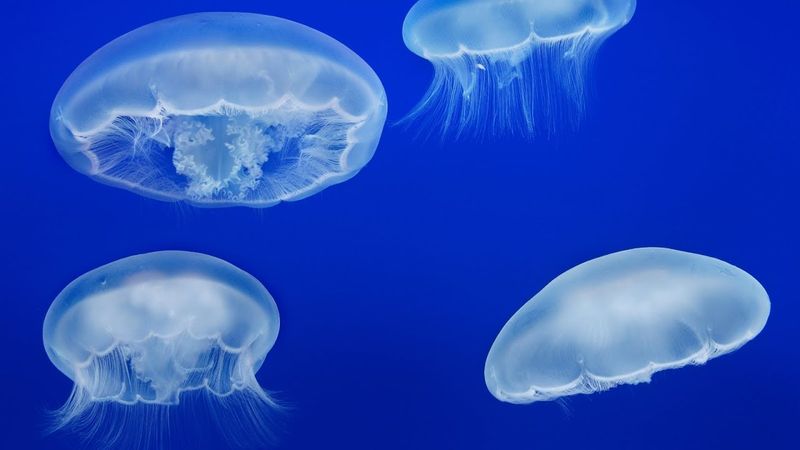
Jellyfish, known for their gelatinous bodies and hypnotic movements, are ancient creatures that have roamed the oceans for over 500 million years.
With no brain or heart, their simplicity in design is a marvel of nature. The species range from the tiny, nearly invisible Irukandji to the massive Lion’s Mane, whose tentacles can reach lengths of over 100 feet.
Jellyfish inhabit oceans worldwide, thriving in both deep and shallow waters. They use their tentacles to capture prey, delivering a sting that can be either harmless or lethal to humans, depending on the species. Their ethereal glow in the water is often due to bioluminescence, a trait that adds to their mystique.
Despite their beauty, jellyfish blooms can indicate imbalances in marine ecosystems, often linked to overfishing and climate change.
Understanding their role in the ocean helps scientists monitor environmental changes. Their presence serves as a reminder of the ocean’s complexity and the importance of maintaining its health.
4. Clownfish
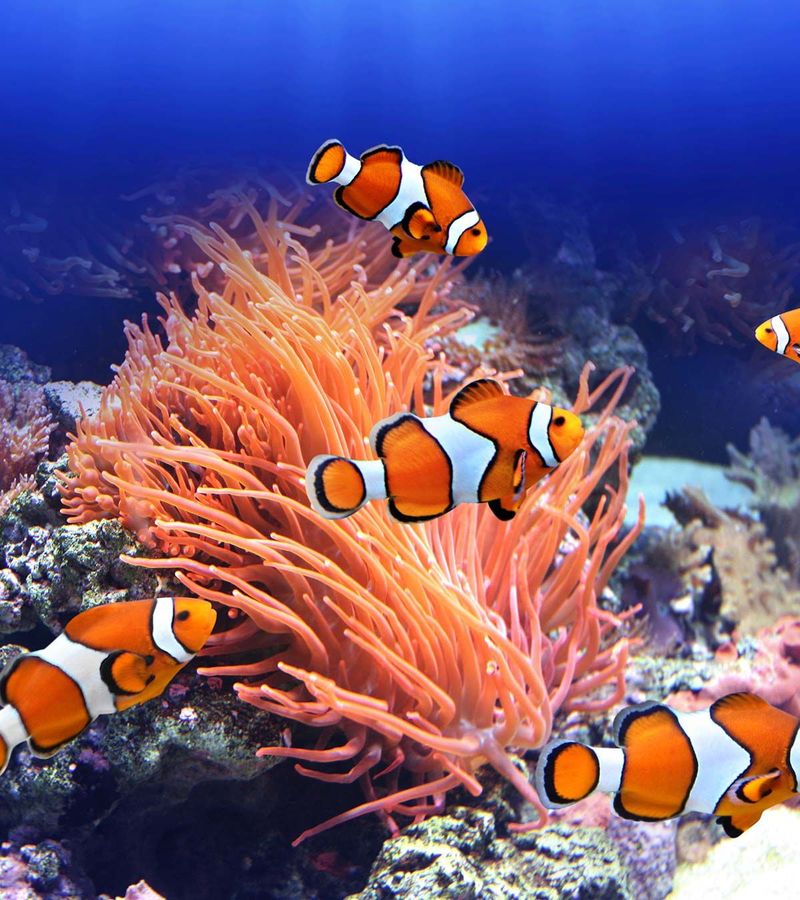
Clownfish, or anemonefish, are small, brightly colored fish that have captured the hearts of many, thanks in part to popular culture. These fish are easily recognizable by their orange bodies and white bands. They form symbiotic relationships with sea anemones, where they find both protection and a place to lay their eggs.
Found primarily in the warm waters of the Pacific and Indian Oceans, clownfish live in coral reefs and shallow lagoons.
Their unique partnership with anemones is a fascinating example of mutualism: the anemone provides the clownfish with protection from predators with its stinging cells, while the clownfish aids the anemone by driving away potential threats and providing nutrients through its waste.
Clownfish communicate through popping sounds and body language, further endearing themselves to those who study them.
They play a vital role in their ecosystems, contributing to the biodiversity and health of coral reefs. Observing them in their natural habitat offers insight into the delicate interdependencies that sustain ocean life.
5. Manta Ray
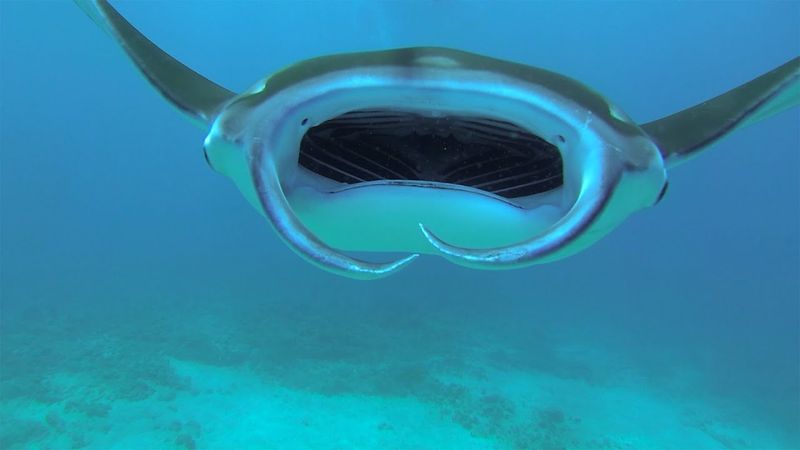
Manta rays are majestic creatures known for their grace and intelligence. These large rays can have wingspans reaching up to 29 feet, making them one of the ocean’s most awe-inspiring inhabitants. Despite their size, manta rays are gentle giants, feeding primarily on plankton and small fish.
Manta rays are found in warm waters around the world, often near coral reefs and along continental shelves.
They are known for their curious nature and are frequently observed interacting with divers. Their graceful acrobatics, such as somersaults and barrel rolls, are a delightful sight for those lucky enough to witness them.
Conservation of manta rays is crucial, as they face threats from overfishing and habitat destruction. They are often caught accidentally in nets meant for other species, a practice known as bycatch.
Efforts to protect these creatures focus on creating marine protected areas and regulating fishing practices. Manta rays remind us of the beauty and fragility of the ocean’s ecosystems.
6. Sea Turtle
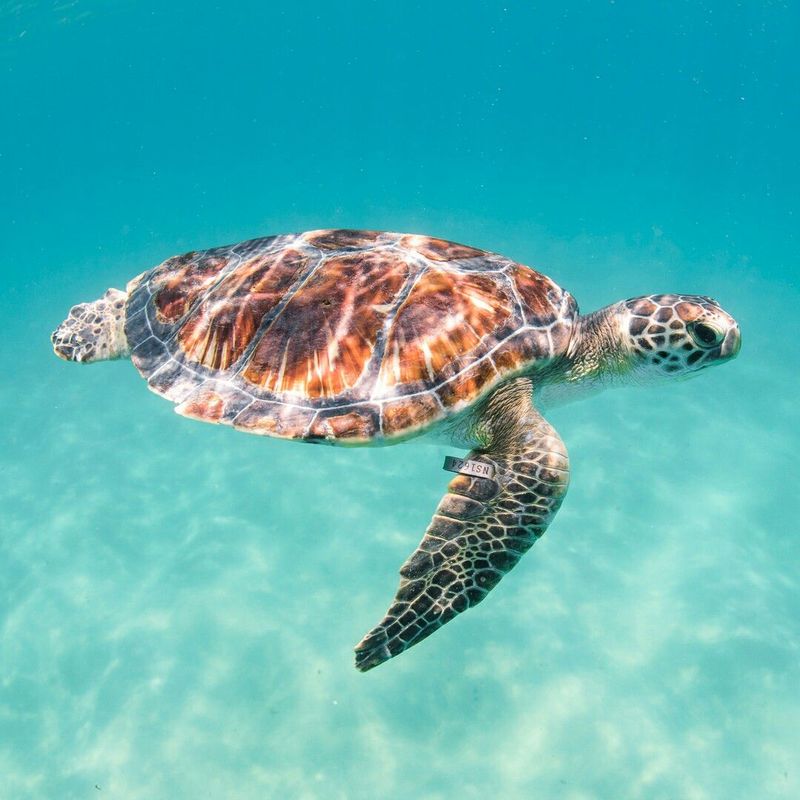
Sea turtles are ancient mariners, navigating the world’s oceans for over 100 million years. With their streamlined shells and powerful flippers, they are perfectly adapted to life at sea.
There are seven species of sea turtles, ranging from the small Kemp’s ridley to the massive leatherback, which can weigh over 2,000 pounds.
Sea turtles are found in nearly every ocean basin, favoring warm tropical and subtropical waters. They undertake long migrations between feeding grounds and nesting sites.
Remarkably, females return to the exact beach where they were born to lay their eggs, guided by an innate sense of direction.
These reptiles face numerous threats, including habitat loss, pollution, and climate change. Conservation efforts include protecting nesting sites and reducing plastic pollution, which poses a significant threat to their survival.
Sea turtles are symbols of endurance and resilience, reminding us of the intricate balance of marine ecosystems and the need to protect them.
7. Octopus
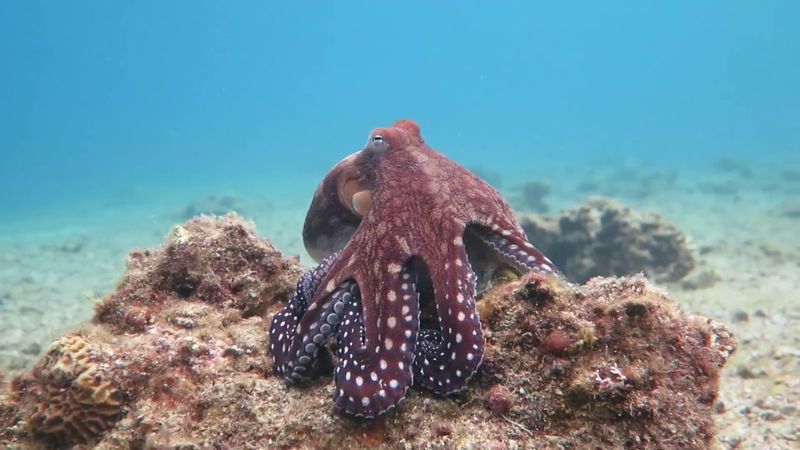
The octopus is a master of disguise, known for its intelligence and ability to camouflage. With eight arms lined with sensitive suckers, they are adept at exploring their environment and manipulating objects. Their soft bodies and lack of a rigid skeleton allow them to squeeze through remarkably small spaces.
Octopuses are found in oceans worldwide, from coral reefs to the deep sea. They use their camouflage abilities not only to evade predators but also to ambush prey such as crabs and fish. Their remarkable intelligence is demonstrated through problem-solving skills and the ability to learn from experience.
These cephalopods have relatively short lifespans, which can range from six months to a few years, depending on the species.
Despite this, they play a critical role in marine ecosystems, serving as both predator and prey. Understanding their behavior offers insight into the complex interactions within the ocean. Octopuses captivate the imagination, highlighting the incredible diversity of life beneath the waves.
8. Seahorse
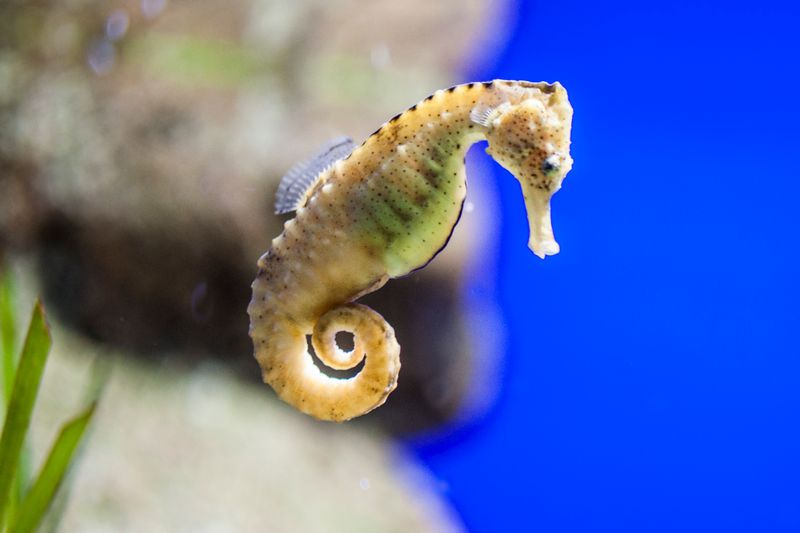
Seahorses are enchanting creatures, known for their unique appearance and fascinating reproductive habits. Unlike most fish, seahorses have a horse-like head and a curled tail that they use to anchor themselves to seaweed and coral. Their bony armor provides protection, while their ability to change color aids in camouflage.
Found in shallow tropical and temperate waters, seahorses are frequently seen living among seagrass beds and coral reefs.
They have an unusual mode of reproduction: males carry the fertilized eggs in a pouch until they hatch. This role reversal is rare in the animal kingdom and highlights the diversity of life strategies in the ocean.
Seahorses face threats from habitat destruction and are often captured for the aquarium trade and traditional medicine.
Efforts to protect them include habitat restoration and sustainable fishing practices. Observing seahorses in their natural habitat offers a glimpse into the delicate complexity of marine ecosystems and the importance of conserving them.
9. Dolphin
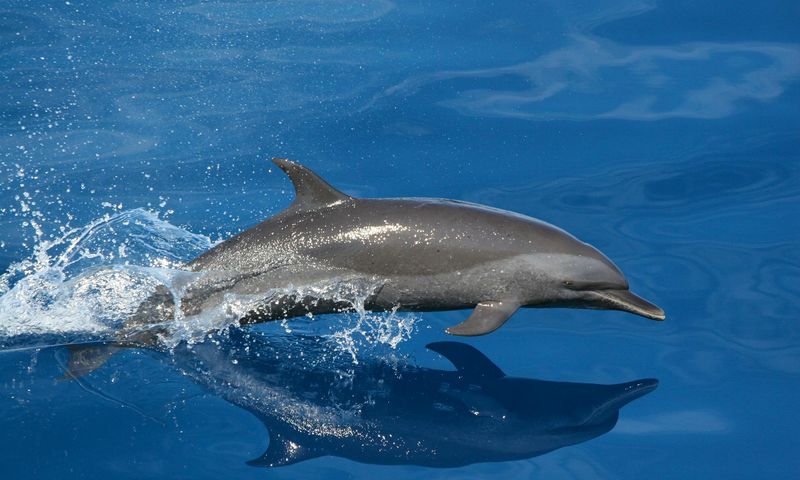
Dolphins are renowned for their intelligence and playful behavior. These social animals live in pods, working together to hunt and care for their young.
With sleek bodies and powerful tails, they are expert swimmers, capable of reaching speeds over 20 mph. Their clicks and whistles form a complex language used for communication and echolocation.
Found in oceans worldwide, dolphins thrive in both tropical and temperate waters. They are curious creatures, often seen riding waves and interacting with boats. Observing dolphins in the wild is a joyful experience, as their playful nature and acrobatic displays delight onlookers.
Dolphins face threats from pollution, fishing nets, and habitat loss. Conservation efforts focus on protecting their natural environments and reducing bycatch.
Education and awareness are key to ensuring their survival. Dolphins inspire our imagination and remind us of the interconnectedness of life within the ocean.
10. Narwhal
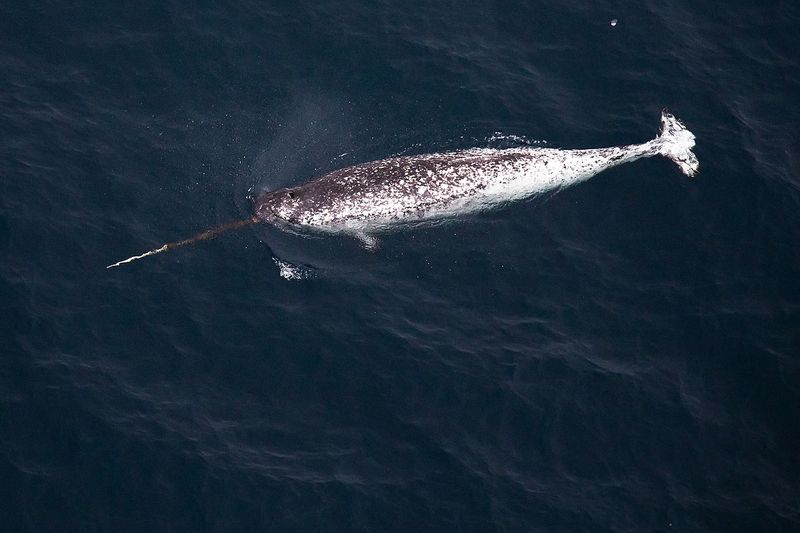
The narwhal, often called the unicorn of the sea, is a fascinating creature found in the Arctic’s icy waters. Known for its long, spiral tusk, which is actually an elongated tooth, the narwhal’s appearance has inspired myths and legends for centuries.
These tusks can grow up to 10 feet long and are thought to play a role in mating rituals and dominance displays.
Narwhals are social animals, typically seen traveling in groups called pods. They feed on fish and squid, diving to great depths in search of food. Their ability to navigate and survive in harsh Arctic conditions is a testament to their adaptability.
Threats to narwhals include climate change and its impact on ice habitats, as well as hunting by humans.
Conservation efforts aim to protect these unique creatures and their environment. Observing narwhals in their natural habitat is a reminder of the ocean’s mysteries and the need to preserve its wonders for future generations.


